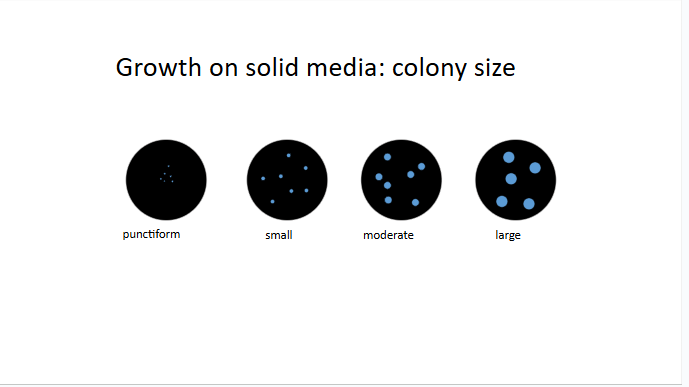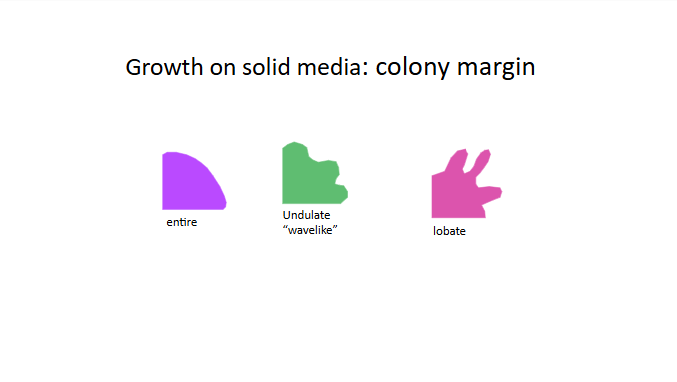LAB 3: Aseptic technique & bacterial cell morphology
1/27
There's no tags or description
Looks like no tags are added yet.
Name | Mastery | Learn | Test | Matching | Spaced |
|---|
No study sessions yet.
28 Terms
Sterile
absence of any/all viable organisms; includes viruses
does not have to mean KILLED
can also mean organisms have been moved
NOTE: just because something looks sterile does not mean it actually is!!
Pure Culture
only ONE type of organism growing
Mixed culture
two or more organisms growing, purposefully
Contaminated culture
unwanted microbes present
Turbid
visible cloudiness (millions of cells at this point)
What happens when a single bacterial cell is deposited on the surface of nutritive medium?
The single bacterial cell will start to divide exponentially.
colony
thousands (up to billions) of cells are formed, this is a visible mass.
Why is it important to identify and categorize isolated bacterial colonies based on their appearance and morphology?
It allows distinction of species in a mixed culture and enables transfer of a single colony to sterile media for cultivating pure cultures.
What does colony morphology depend on?
It depends on the media.
What are some colony shapes and size that are often used?
circular and irregular
What are some colony shapes and sizes that are not often used in our Lab?
filamentous, rhizoid, spindle, punctiform (tiny)
What are the different colony sizes?
punctiform
small
moderate
large

What are the different colony margin?
entire - smooth
undulate (wavelike)
lobate/erose

What are the kinds of colony elevation?
flat and raised
What are some terms for colony elevation?
effuse: very thin, spreading, flat,
umbonate: raised, raised with spreading edge convex
What does colonial shape refer to?
refers to the overall shape of the colony
What does colonial margin refer to?
It refers to the edge of the colony
What does elevation refer to?
refers to the way the colony rises above the agar,
What happens when something is water soluble?
The isolation spreads, not clear
What happens when the organism is water insoluble?
Localized to colony only, isolation is much better
Coencentric
swaeming
Mucoid
really really, snooty gooey
What is streaking used for?
a technique used in microbiology for isolation of bacteria
What is agar?
A substance extracted from cell walls of red algae. It is commonly used to grow bacteriological cultures, agar must be impregnanted with nutrients such as beef extract and peptone in order to support life
Why is agar slants good?
The slanting of the surface of the agar gives the bacteria a greater surface area on which to grow in a test tube. They are also useful in maintaining bacterial cultures, more so than stacks of petri dishes.
What bacterial species did we use in lab?
serratia marcesens and micrococcus luteus
What agar plate did we use?
TSA plate
What are the steps to streaking?
grab a loopful of the bacteria, DO NOT GRAB MORE BACTERIA AFTER THIS!
spread the bacteria on one side like ¼ of the way
then turn the plate 45 degree and do the same streaking motion
repeat steps 2 and 3, two more times
on the last streak you will streak like normal and then draw a swiggle towards teh middle.